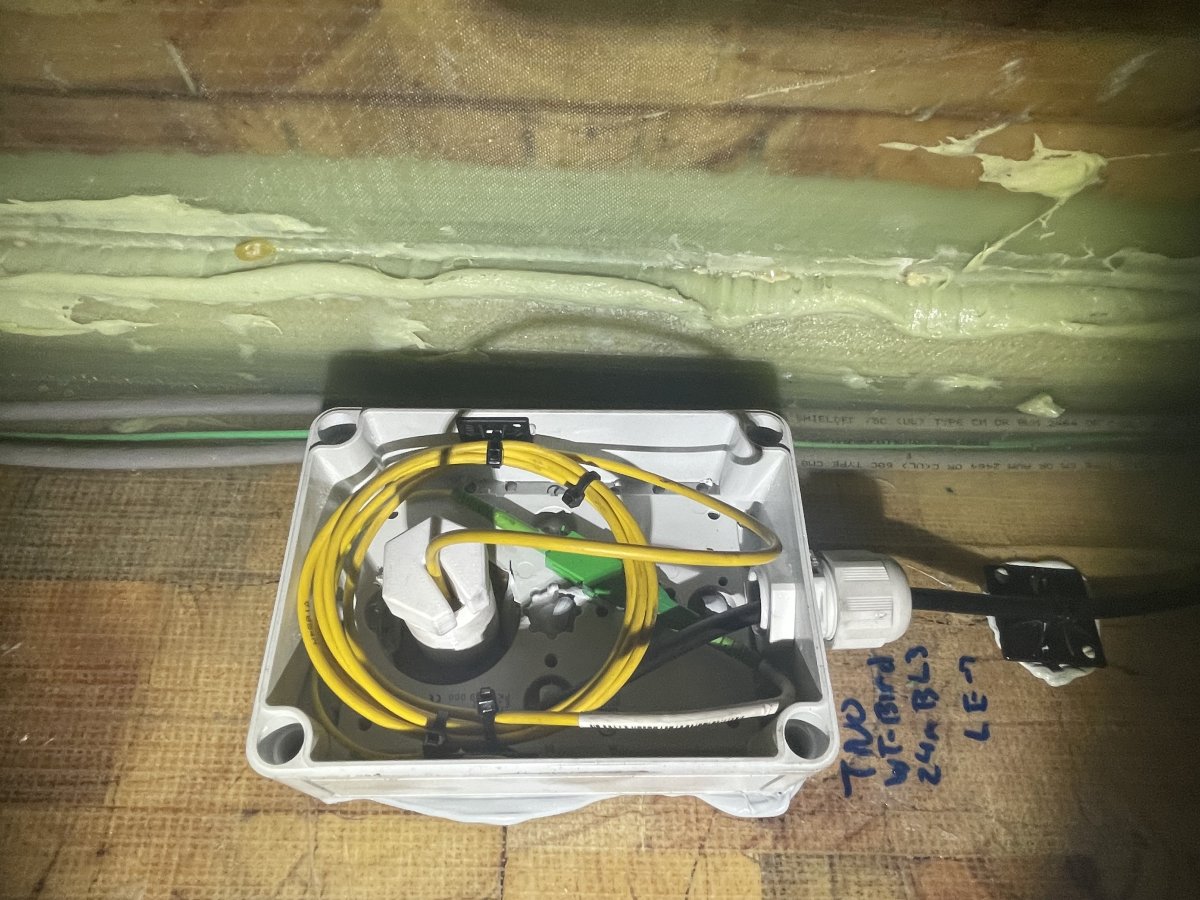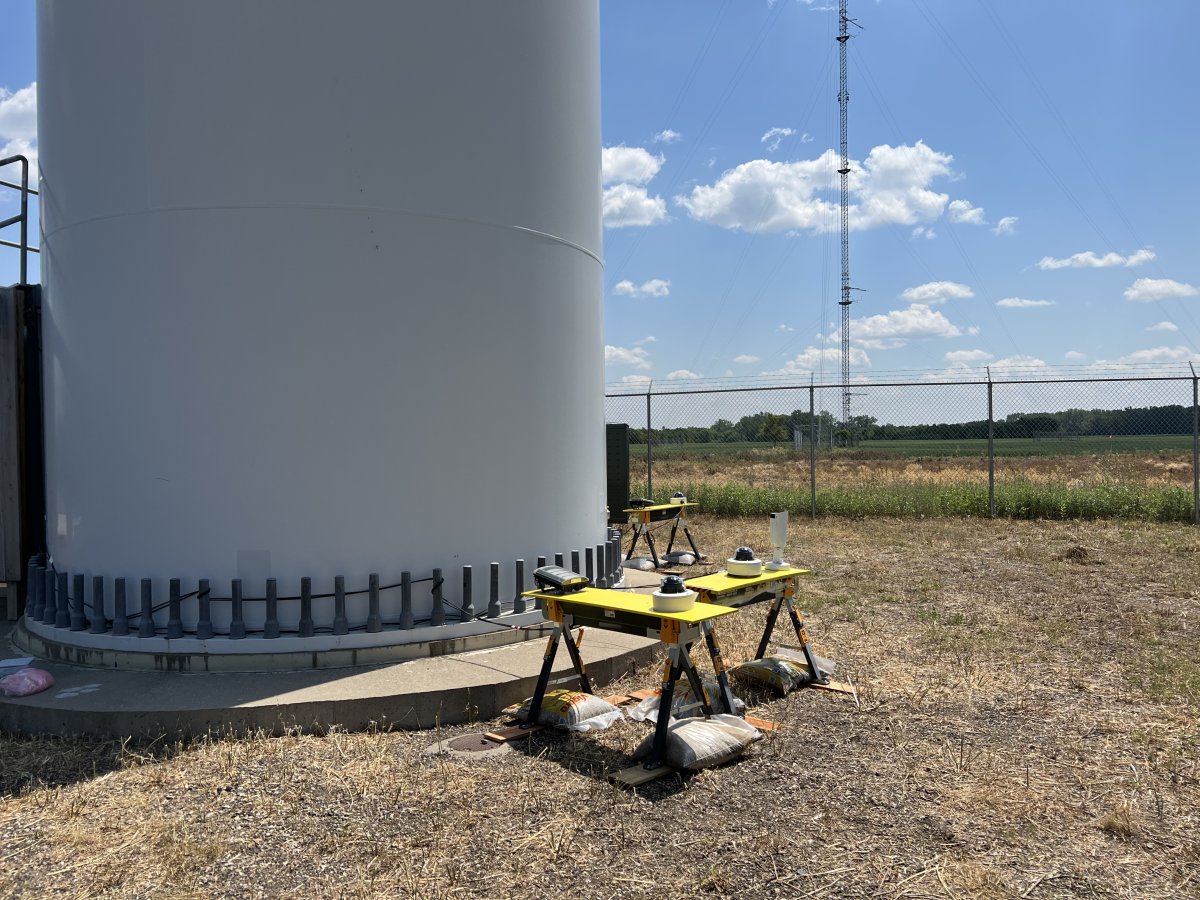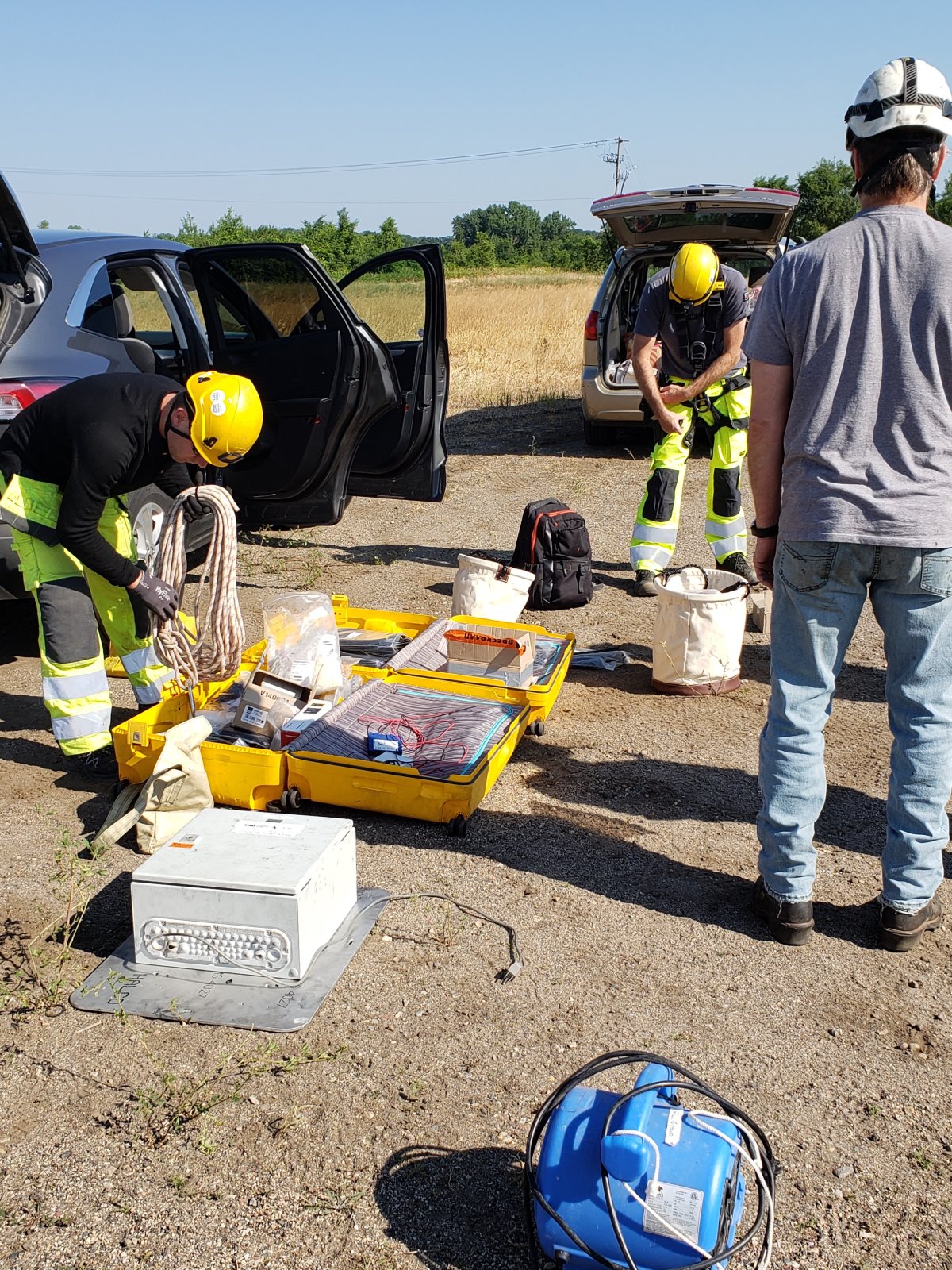SAFL partners with WEST & TNO on system to detect bird and bat collisions at wind turbines

In early July, representatives from St. Anthony Falls Laboratory (SAFL), Western EcoSystems Technology, Inc. (WEST) and the Netherlands Organization for Applied Scientific Research (TNO) were busy installing vibration sensors and cameras on the wind turbine at the Eolos Wind Energy Research Station at UMore Park.
“We’re evaluating and refining a multi-sensor system developed by TNO to detect bat and bird collisions with wind turbine blades,” explains Dr. Jennifer Stucker, senior research biologist for WEST who manages the project, titled A Multi-Sensor Approach for Measuring Bird and Bat Collisions with Offshore Wind Turbines. Standard land-based approaches for monitoring wildlife collisions at wind turbines will not work at turbines located offshore in the water.

Inside each of Eolos’ three blades, vibration sensors have been installed which are capable of detecting greater than 65% of all collisions 8 grams or larger – a sensitivity capable of registering bats and small birds like warblers. At three locations around the base of the turbine, the team is also testing an infra-red illuminator and thermal and full-spectrum cameras to capture activity in the air.

The main goal of testing at Eolos is to validate the collision detection system before deploying it on an offshore wind turbine in Denmark in 2023. Currently, little is known about bird and bat collisions at offshore wind turbines; with this new technology, Stucker and her team hope to verify that collisions are an infrequent occurrence.
The project, funded by the Department of Energy’s Office of Energy Efficiency and Renewable Energy, also has important applications for land-based wind turbines, where bird and bat collisions are a documented reality.

Every year, the Renewable Energy Wildlife Institute estimates that 3.5 birds and 7.7 bats will collide with an average-sized land-based wind turbine like the Clipper Liberty 2.5-megawatt turbine at the Eolos facility. To reduce wildlife collisions, land-based turbines are sited away from major migration corridors, forests and bodies of water. Windfarm operators in Minnesota and many states across the U.S. also monitor their turbines to see if birds and bats are being struck. However, current monitoring methods offer an incomplete picture due to search limitations.

According to Stucker, this new system will offer a more accurate count of collisions. It will also provide details about when wildlife collide and where on the blade the strikes are occurring – critical information which will help wildlife managers support strategies to minimize wildlife collisions. Curtailment is a key form of protection, especially for bats, who are drawn to turbines for reasons still not understood by biologists.
“We have wind turbines, a fantastic technology capable of making renewable energy, but there are impacts to the environment,” says Chris Feist, associate engineer at SAFL and partner on this project. “This multi-sensor system seems like a great technology to minimize those impacts, making wind energy even more appealing.”
Learn more about the research conducted at the Eolos Wind Energy Research Station.
